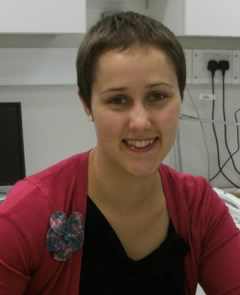Naomi Luxford
I laid the foundations for my future conservation studies by volunteering at National Museums Liverpool's Conservation Centre. There I learned first-hand about the work of a conservation scientist, including how to carry out environmental monitoring, set pest traps and much more.

A week of volunteering at Birmingham Museums and Art Gallery added a basic understanding of light control and fading issues.
My work as a volunteer in Liverpool led to a 3-month internship in the science section, giving me experience of materials testing and dust monitoring. This was key to gaining a place on a conservation MA course specialising in conservation science. It gave me a passion for the subject and helped me hit the ground running when the course started.
I applied for the (sadly now defunct) RCA/V&A MA programme because it combined practical work three days a week alongside a two-day a week taught programme. Intense? Yes, but it meant you applied what you learned almost immediately and made connections between the academic programme and the real-life work of the profession. Working with experts at English Heritage, the partner institution for my practical work, provided wide-ranging experience.
Two summer internships as part of the MA, one with my host institution and another at the Metropolitan Museum of Art in New York gave me further real-life experience of the job; increased my skills, taught me new ones, and increased both my knowledge of collections and my network of heritage professionals. I went on to do a PhD and post-doc in heritage science, further enhancing my skills and knowledge.
Gaining practical, hands-on experience right from the start has helped me develop effective communication strategies and a focus on keeping my research useful and relevant to practice. Understanding the questions heritage professionals ask and how to set about answering them - with analysis or experiments, research or literature review - gave me key skills which I still use every day in my curent role. For me, the placements and work-based learning, while hard to get and hard to fund, have made all the difference.
